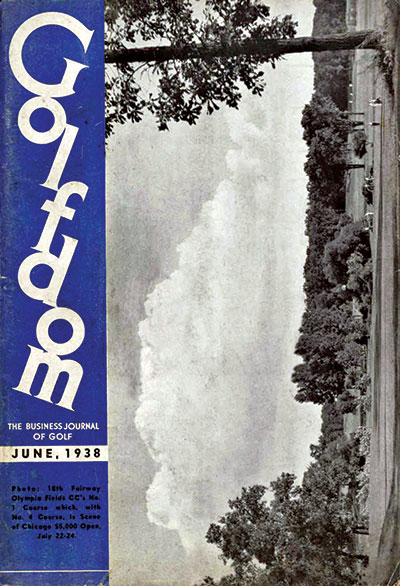Golfdom Files: Traps—What size? What depth?
In the June 1938 edition of Golfdom, golf course architect Robert Trent Jones wrote about the evolution of American golf course design, and in particular the areas that torment golfers and superintendents alike: bunkers. He explained that the charm and challenge of these hazards comes from their inconsistent sizes, shapes and depths and their intentional placements on the course — all in the effort to provide a “balanced source of punishment.” Read the full article here. And stay tuned for our April issue, where we’ll be looking at today’s bunker renovations and how several courses have approached renovation projects.
 One of the charms of the English seaside courses is the infinite variety, the tumbling irregularity and the rugged appearance of their traps. Like the catch in the Scotch fishermen’s baskets, they are all sizes and shapes. So important has been their influence in the realm of golf that some of them have been given such names as Hell’s Bunker at St. Andrews (which cost Gene Sarazen the British Open one year), Sandy Parlor and Hell’s Half Acre.
One of the charms of the English seaside courses is the infinite variety, the tumbling irregularity and the rugged appearance of their traps. Like the catch in the Scotch fishermen’s baskets, they are all sizes and shapes. So important has been their influence in the realm of golf that some of them have been given such names as Hell’s Bunker at St. Andrews (which cost Gene Sarazen the British Open one year), Sandy Parlor and Hell’s Half Acre.
One of the weaknesses of our early American courses was the tendency to standardize the size, shape and depth of the traps, as if they came out of one mold. While through this we may have become proficient in blasting to within a drop-putt area of the pin, at the same time it has made golf lose some of its charm.
While deep traps still have their spine-quivering effect, they no longer produce that aggravating fear that existed before the advent of the sand-wedge. When a Revolta will play from 13 traps during the course of a championship tournament and still turn in a card of 71 by virtue of his trap-shot efficiency combined with a velvet putting stroke, traps have certainly lost some of their sting for the expert. But even the sand-wedge has not proved infallible, particularly as far as the average golfer is concerned, for he can still be seen looking for the ball at the pin when he should be looking at his feet after a vigorous effort in the trap.
How then, can we combine the design of the hole to give a balanced source of punishment to all types of golfers, making it sufficiently fearful for the crack golfer without making it too tough for the average shooter? This can be done by having key or master traps from the tee and at the green, the location of which will depend upon the strategic value of the shot. These can be made fearful looking by flashing the sand and sod, and actually fearful by undulating the traps so that a constant variety of shots must be played due to the stance one obtains at the spot where the ball has stopped.
At the same time, such undulations can be made to blend with the subtle green contours and the dune-like framework of the green, making the hole an artistic one as well as a fair test of golf. Such traps should be located primarily to affect the shots that would be normally played by the expert.
To make hole and green design more attractive and to administer a psychological effect, other traps necessary to complete an attractive and interesting golf hole should be of varying depths and sizes with a tendency toward the shallow, so that while the average golfer may frequently find his ball in them, he will require but one stroke to get out of them. Even though the traps are shallow, tests have shown that the odds of the golfer’s getting down in one putt after having recovered from such a trap are decidedly against him.
Photo: Golfdom








